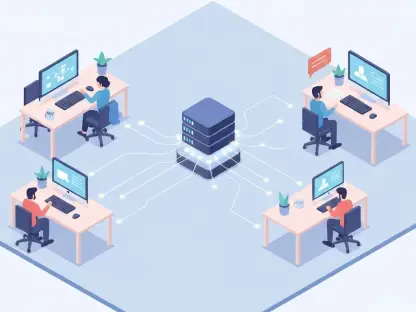In an era where software development is increasingly driven by speed and innovation, a groundbreaking approach known as vibe coding is capturing the attention of developers worldwide, promising to redefine the field. This method, powered by artificial intelligence and seamlessly integrated with cloud-native platforms, allows coders to translate ideas into functional code using natural language prompts, bypassing the constraints of traditional syntax-heavy programming. By leveraging intuitive, conversational interactions with AI models, this paradigm promises to redefine how projects are conceptualized and executed, particularly within robust ecosystems like those provided by major cloud providers. It’s a shift that not only enhances productivity but also democratizes coding, making it accessible to a broader range of skill levels. As the tech landscape continues to evolve, understanding this transformative approach becomes essential for staying ahead in a competitive field.
Unlocking Creativity Through AI-Driven Coding
Harnessing Natural Language for Code Generation
The essence of vibe coding lies in its ability to transform everyday language into actionable code, streamlining the development process in ways previously unimaginable. Developers can describe a desired functionality—such as creating a serverless function for handling data uploads—and the AI responds with tailored snippets that align with specific platforms or services. This conversational style reduces the cognitive load of memorizing complex syntax, allowing focus to shift toward problem-solving and innovation. Moreover, the approach accelerates prototyping, enabling rapid iteration of ideas without the delays often associated with manual coding. Supported by advanced cloud tools, this method ensures that generated code can be integrated into scalable architectures with minimal friction, fostering an environment where creativity thrives over technical barriers. The potential to redefine workflows is immense, as developers spend less time on routine tasks and more on crafting unique solutions.
Enhancing Productivity Across Skill Levels
Beyond simplifying code creation, vibe coding serves as a powerful equalizer in the development community by catering to both novices and seasoned professionals. For beginners, it lowers the entry barrier, enabling those with limited technical backgrounds to contribute meaningfully by articulating ideas in plain language. Experienced developers, on the other hand, benefit from accelerated workflows, as the AI handles repetitive or boilerplate tasks, freeing them to tackle more complex challenges. This dual impact is particularly evident in cloud-centric projects where integration with services like serverless computing or container orchestration is streamlined through AI-generated outputs. By bridging skill gaps, vibe coding fosters a more inclusive environment, encouraging collaboration across diverse teams. As a result, projects can move from concept to deployment faster, ensuring that innovation isn’t stifled by technical limitations or steep learning curves inherent in traditional programming.
Navigating Challenges and Future Potential
Addressing AI Limitations with Strategic Practices
While vibe coding offers remarkable advantages, it is not without hurdles, particularly the risk of AI producing inaccurate or non-functional code, often referred to as hallucinations. Such errors can lead to delays or security vulnerabilities if not addressed promptly, underscoring the need for rigorous validation of AI outputs. Developers are encouraged to cross-reference generated code against established best practices and official documentation to ensure reliability. Additionally, crafting precise prompts with clear context—specifying programming languages or performance constraints—plays a critical role in minimizing mistakes. Iterative refinement of these prompts, adjusting based on initial results, further enhances accuracy. By combining these strategic practices with thorough testing, the pitfalls of AI-driven coding can be mitigated, allowing developers to harness its benefits while maintaining high standards of quality and security in their projects.
Evolving with AI Advancements and Community Collaboration
Looking ahead, the trajectory of vibe coding appears promising, driven by the rapid evolution of AI models and active community engagement. Updates to underlying technologies ensure that tools remain relevant, with repositories reflecting recent activity and ongoing improvements to enhance functionality. Collaboration within developer communities also plays a pivotal role, as shared experiences and projects inspire new applications of this approach. Forums and platforms dedicated to vibe coding showcase real-world examples, from small-scale experiments to enterprise-level implementations, highlighting its versatility. For organizations, integrating this method into training programs can yield significant cost savings and faster project timelines by empowering teams with intuitive tools. As AI continues to mature, the blend of human oversight and machine efficiency will likely redefine coding norms, positioning vibe coding as a cornerstone of future development practices.
Reflecting on Transformative Impact
Building on Past Successes for Future Innovation
Reflecting on the journey of vibe coding, it becomes clear that this approach has already reshaped countless development workflows by blending human intuition with AI precision. Developers have witnessed significant reductions in time spent on repetitive tasks, allowing them to channel efforts into creative problem-solving within cloud environments. The seamless integration with scalable architectures has proven instrumental in driving efficiency, particularly for projects requiring rapid deployment. Moreover, the emphasis on natural language as a coding interface has opened doors for diverse contributors, fostering inclusivity across teams. As challenges like AI inaccuracies are tackled through diligent testing and refined prompt engineering, the reliability of this method has steadily improved, setting a strong foundation for what lies ahead in the ever-evolving tech landscape.
Charting the Path Forward with Actionable Strategies
Moving beyond past achievements, the focus now shifts to actionable steps that can amplify the impact of vibe coding in future endeavors. Developers are encouraged to prioritize continuous learning, staying updated with advancements in AI tools and cloud services to maximize their potential. Engaging with collaborative platforms to share insights and refine techniques will further strengthen the community around this innovative approach. Enterprises should consider embedding vibe coding into their training frameworks, equipping teams with skills to leverage AI for faster, cost-effective outcomes. Additionally, maintaining a balance between automation and human oversight remains crucial to ensure quality and security are never compromised. By adopting these strategies, the development community can push the boundaries of what’s possible, ensuring that vibe coding continues to evolve as a transformative force in software creation.









